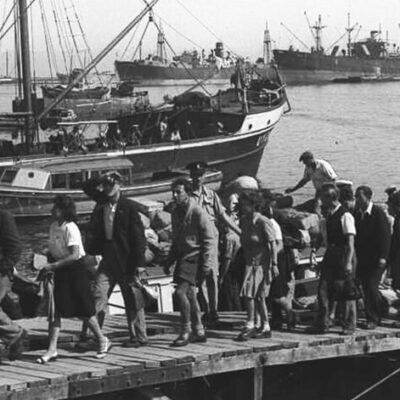Irena Sendler

Those who served in the army will understand me: the easiest thing is to march in step with the others, and if you also sing with a choir, it’s easier than anything else. Many of us walked that way for years without seeing anything around us. Back in 1956, in 1968, in 1979… We thought it was right, and even if we had doubts, we kept up our pace – as everyone else, so were we… Up there, they know better…
Fortunately, at all times there were people who listened not to slogans and brave songs, but to their conscience. One of them was Irena Sеndler. Many articles have been written about this extraordinary person, and recently, after reading another article about her, I began to ask my children and co-workers if they knew who Irena Sеndler was. It turned out they did not. So, I decided once again to tell about this Woman on the pages of my site.
She was born on February 15, 1910, in Warsaw, her father, Stanislaw Krzyzanowski, was a socialist doctor who treated mostly poor Jews whom other doctors refused to help. He died of typhoid fever, having contracted it from his patients. After his death, representatives of the Jewish community offered to help his wife pay for the education of Irena, who after high school entered the University of Warsaw as a student of Polish literature.
At the university, where she studied Polish philology, she was nearly expelled, as her father had once been expelled from medical school: when the university introduced the so-called “ghetto behind the desks,” Sandler crossed out the entry “right side, Aryan” (the left side was for Jews) on her report card. It was not until several years later that Professor Tadeusz Kotarbinski reinstated Irena as a student. She graduated in 1939, but her views prevented her from finding a teaching position, so she returned to the Welfare Office where she had once worked.
World War II. Poland. In the capital, all the Jews are driven into the ghetto. Irena manages to obtain permission from the municipality to visit the ghetto in order to inspect sanitary conditions. As an employee of the Social Welfare Department, she visits the Warsaw ghetto several times a day. The official reason was to compile questionnaires for social assistance to ghetto prisoners, but in reality, she carefully developed and realized a rescue plan for the ghetto residents.
People left the ghetto by various means: through an underground tunnel that faced the “Aryan” part of Warsaw – the guards who guarded the tunnel exit were bribed. The inmates were also taken out on the famous streetcar, which ran through the ghetto, with the help of Leon Sheshko, the wagon driver. Some were helped out of the ghetto by workers of the maintenance team. Thus, little Stepanek was rescued, who was hidden under the coat of a maintenance worker. The hardest thing was with small children, because they didn’t understand what was going on. Babies were given sleeping pills, placed in small boxes with holes so they wouldn’t suffocate, and taken out in cars that brought disinfectants to the camp. Some children were escorted out through the basements of houses immediately adjacent to the ghetto. Sewer manholes were also used for escapes. Babies were carried out in sacks, baskets and cardboard boxes. In the cab of the car carrying the babies there was a dog and its barking, in case of danger, drowned out the baby’s cries. All these rescue plans were devised, and often carried out, by Irena Sendler herself.
After the children were removed, they had to be adapted to the “new life. The children had their names changed to Polish, were forced to learn to speak Polish instead of Yiddish, and to learn Catholic prayers. With a new identity and fake documents, they ended up in orphanages (the youngest in monasteries or at the House of Xondz Boduen) and in Polish families. Often, they were moved from place to place. Irena Sendler was in charge of all this.
She wrote down the details of all the rescued children on narrow strips of thin paper and hid them in glass jars in the garden. The jars were buried under an apple tree in her friend’s garden. After the war, all this information was given to Adolf Berman, chairman of the Central Committee of Polish Jews. With the help of this list, the committee staff tracked down the children and handed them over to their relatives. Orphans were placed in Jewish orphanages and later, many of them were sent to Israel. More than 2,500 children were saved!
In 1965, Yad Vashem – The World Holocaust Remembrance Center in Israel, honored Irene Sandler with the highest honor a non-Jew could receive: listing her as Righteous among the Nations and inviting her to plant a new tree on the Righteous Alley, but she could not come to Israel until 18 years later, when the Polish authorities lifted her travel ban and allowed her to come to Jerusalem, where a tree was planted in her honor.
In 2003, Polish President Aleksander Kwasniewski awarded her the Order of the White Eagle, Poland’s highest honor. In 2006, when Irena Sandler was 96 years old, Polish President Lech Kaczynski and the society “Children of the Holocaust” applied to nominate Irena Sendler for the Nobel Peace Prize, but she was refused. The Nobel Committee deemed her merits insufficient…
Irena Sendler died on May 12, 2008, in Warsaw. She saved the lives of thousands of children and kept repeating that it was too insufficient…

















